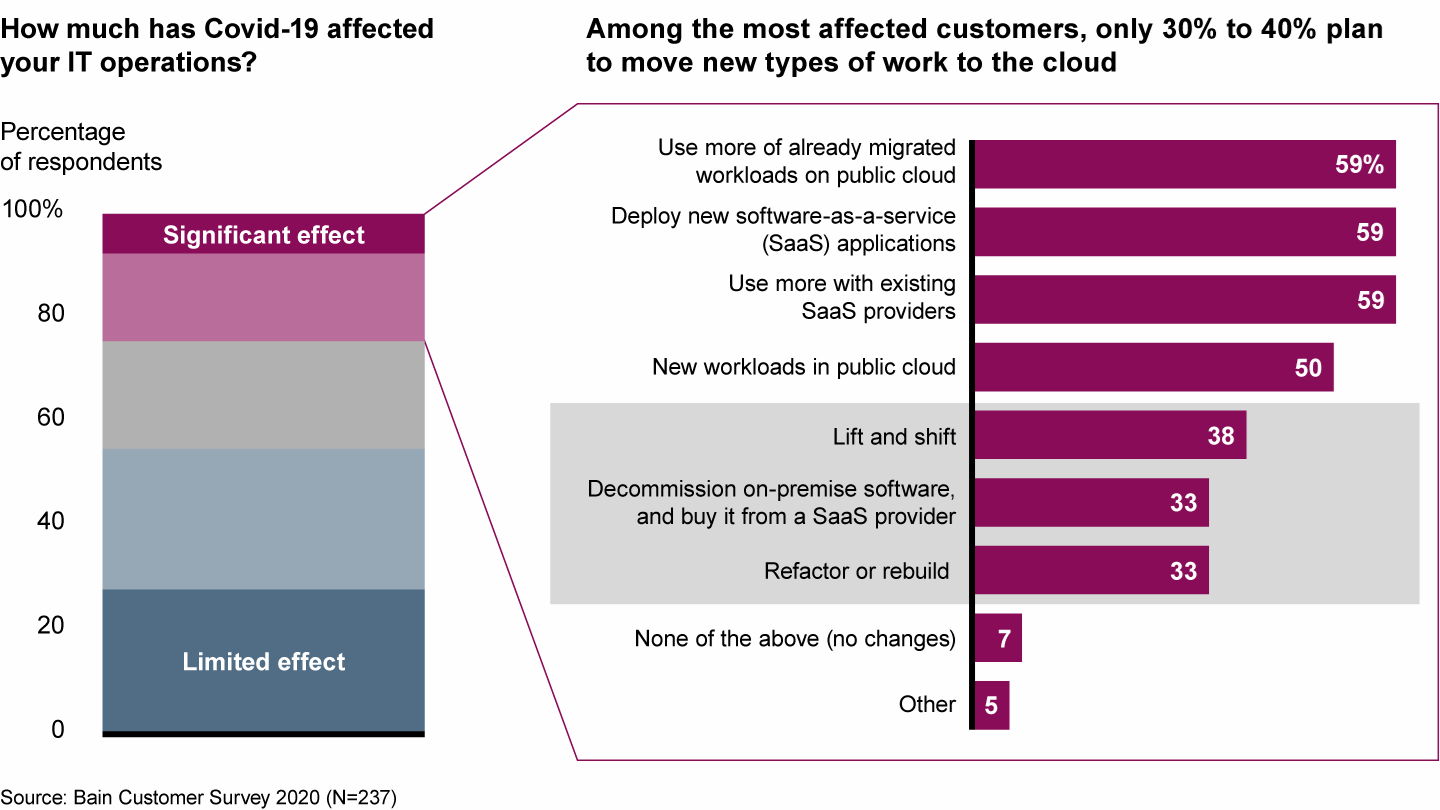Article

This is the eighth in a series of posts on the enterprise cloud market—its economics, customer segments and the opportunities for technology providers.
When the pandemic shut down economies and many companies shifted to work-from-home models, some expected to see a sharp increase in cloud adoption. And while it’s true that some categories have boomed and a few companies have experienced tremendous growth—for instance, Zoom’s market cap more than quadrupled between December 2019 and August 2020—overall cloud spending hasn’t grown abnormally.

Macro Surveillance Platform
For more detail on the business implications of coronavirus from Bain’s Macro Trends Group, log on to the Macro Surveillance Platform. Learn more about the platform >
Bain’s analysis of spending and utilization data provided by 7Park Data found that first-quarter 2020 cloud spending growth was just a bit lower year over year and that the second-quarter 2020 growth rate was significantly lower year over year (see Figure 1). Of course, the rates differ by categories: Security and collaboration services are notable exceptions, with spending on the rise to accommodate more remote work (see the Bain Snap Chart “Lockdowns Spike Spending on Collaboration and Software Tools”). But, in general, investment in IT has paused: Even Amazon Web Services' growth has slowed during the pandemic, growing only 29% in the second quarter after reporting 33% growth in the first.
Growth in cloud spending is at or below historical levels


What’s more, 75% of chief information officers say that their IT operations have not meaningfully changed because of Covid-19. Of those with IT operations that have been significantly affected, only one-third plan to refactor or rebuild workloads in the public cloud (see Figure 2). Most prefer the cleaner approach of developing new apps in the cloud. But this takes time and money, and, at the moment, most IT departments are cutting budgets.
Among the sampling of IT operations that have been significantly affected by the pandemic, only a third are refactoring new workloads for the cloud


As a result, long-term prospects for cloud adoption haven’t changed significantly. Maybe this is to be expected: Many companies have already taken the low-hanging fruit by migrating the workloads that were easiest to shift. Remaining workloads may be more complex, requiring more effort to refactor and disentangle from legacy systems before they can be ported to cloud-based services. The fundamentals that prevented more complex migration to the cloud—for example, the costs of re-architecting systems or concerns about data privacy—haven’t really changed. And in the scramble to keep remote employees productive, IT departments have their hands full ensuring everything is safe and functioning. Few have had the time or appetite for migrating new types of workloads to the cloud.

Coronavirus
The global Covid-19 pandemic has extracted a terrible human toll and spurred sweeping changes in the world economy. Across industries, executives have begun reassessing their strategies and repositioning their companies to thrive now and in the world beyond coronavirus.